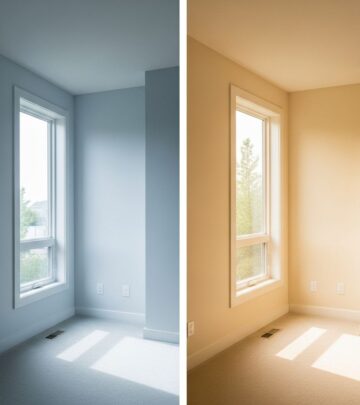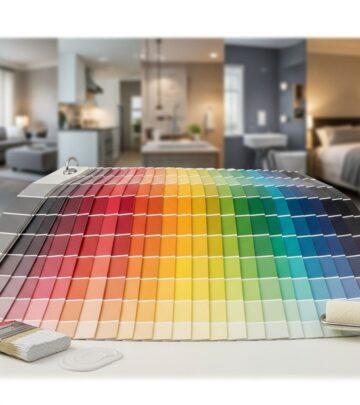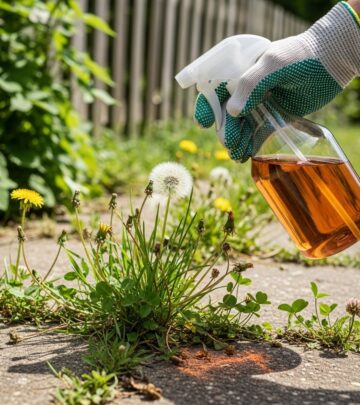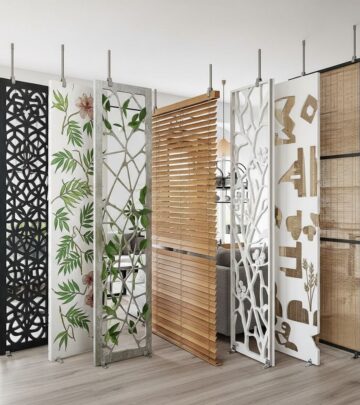Basement Waterproofing Cost: Complete 2025 Pricing Guide
Discover what factors affect basement waterproofing costs and how to budget for this essential home improvement project
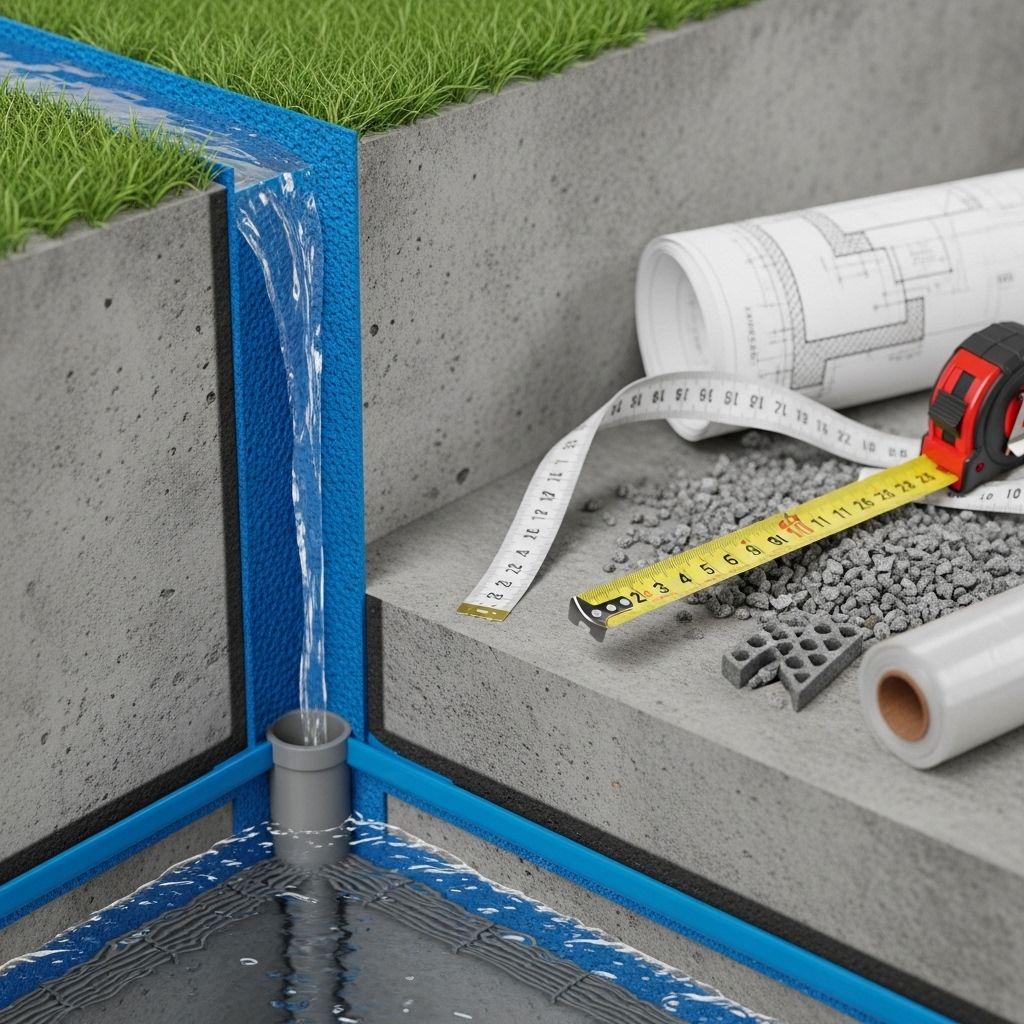
Image: HearthJunction Design Team
How Much Does Basement Waterproofing Cost? (2025 Pricing Guide)
Dealing with a wet basement can be a homeowner’s nightmare. Whether you’re facing minor dampness or major flooding issues, waterproofing your basement is essential for protecting your home’s structural integrity and preventing costly damage. Basement waterproofing services typically cost between $3–$10 per square foot of basement space, with the national average project cost ranging from $2,300 to $7,575.
Where your project falls within that price range depends on your desired level of protection, the severity of your moisture issues, your basement’s size, and the specific waterproofing methods you choose. This comprehensive guide breaks down everything you need to know about basement waterproofing costs in 2025.
What Are Common Types of Basement Waterproofing?
Many different tasks and products go into basement waterproofing. The ones you’ll need depend on your home’s specifics and whether you’re applying them to the basement’s interior or exterior. Generally, basement waterproofing methods fall into two main categories: interior and exterior solutions.
Interior Sealing Solutions
Interior sealing solutions are applied on the inside of a basement’s exterior walls. These options are typically less costly and disruptive than exterior solutions, but they may be less effective on very damp ground. Here are the most common interior waterproofing methods:
Waterproof Paint
This is the least expensive waterproofing option. It can be applied to concrete surfaces for as little as $1–$2 per square foot. While it’s a good first step, it only provides protection against minor seepage and is not a solution for significant water problems.
Concrete Sealers
These substances are applied like paint but provide slightly stronger protection against moisture. There are several types available at different price points:
- Acrylic sealers: $3–$4 per square foot
- Silicate sealers: $4–$6 per square foot
- Epoxy sealers: $5–$7 per square foot
Vapor Barriers
Instead of a coating, a vapor barrier is a separate plastic membrane that’s installed between the concrete of the walls and any finishing materials, such as drywall. The cost to encapsulate a crawl space or basement with vapor barriers is only 50 cents–70 cents per square foot, but professional installation is recommended for best results.
Interior Drainage Systems
If water is a major problem in your basement, you may need an interior drainage system to remove it effectively. These systems can include:
- Baseboard channels: $30 per linear foot
- Subfloor drain tiles: $25–$55 per square foot
- Interior French drain: $60–$120 per linear foot
- Sump pump installation: $300–$1,600
Complete interior drain tile systems typically range between $4,000 and $12,000 on average, with price influenced by the length of the system and added components.
Dehumidifiers
Consider installing a dehumidifier to get rid of any remaining humidity in the air. This can cost $50–$1,000, depending on its size and capacity. Keep in mind that this won’t stop water from entering the basement, and it may actually pull in more damp air if used without addressing the source of moisture.
Exterior Waterproofing Solutions
Exterior basement waterproofing focuses on preventing water from entering the basement through the outdoor walls of the foundation. While more expensive and invasive, these methods often provide the most comprehensive protection.
Exterior Liquid Membrane Waterproofing
This involves applying specialized waterproof coatings to the exterior foundation walls. Costs typically range from $3–$6 per square foot. This method requires excavation around the foundation, which adds significantly to the labor costs.
Exterior Drainage Systems
Installing exterior drainage systems, such as French drains or footer drains, diverts water away from your foundation. These systems typically cost $100–$150 per linear foot, including excavation, installation, and backfilling.
Foundation Crack Repair
Repairing cracks in your foundation is essential for preventing water intrusion. Depending on the severity and accessibility of the cracks, costs can range from $300 to $1,500 per crack.
Due to the extensive excavation work involved, comprehensive exterior basement waterproofing can cost from $1,000 to $15,000, with many projects falling in the $8,000 to $12,000 range.
Factors Affecting Basement Waterproofing Costs
Several factors can impact the overall cost of your basement waterproofing project:
Basement Size
Since many waterproofing solutions are priced per square foot, the size of your basement is one of the most significant cost factors. Larger basements require more materials and labor, increasing the overall project cost.
Severity of Water Issues
The extent of your water problem directly impacts costs. Minor dampness might be addressed with simple solutions like waterproof paint or sealants, while major flooding issues will require comprehensive drainage systems and extensive waterproofing measures.
Accessibility
If your basement is difficult to access or has obstacles that make work challenging, labor costs may increase. Similarly, exterior waterproofing costs rise significantly if landscaping, decks, or other structures must be removed to access foundation walls.
Local Labor Rates
Labor costs vary significantly by region. Urban areas and regions with higher costs of living typically have higher labor rates for home improvement projects.
Existing Damage
If water has already caused damage to your foundation, walls, or floors, repairs will need to be completed before waterproofing can begin. This can add considerably to your project costs.
DIY vs. Professional Basement Waterproofing
While some minor waterproofing tasks can be handled as DIY projects, most significant waterproofing work should be completed by professionals.
DIY-Friendly Waterproofing Tasks
Some waterproofing projects that handy homeowners might tackle include:
- Applying waterproof paint or basic sealants
- Installing a portable dehumidifier
- Cleaning gutters and extending downspouts
- Improving grading around the foundation
- Sealing small cracks with hydraulic cement
When to Hire Professionals
For more extensive waterproofing needs, professional installation is recommended. This includes:
- Interior or exterior drainage system installation
- Sump pump installation
- Extensive foundation crack repairs
- Exterior waterproofing membranes
- Any solution requiring excavation
Professional waterproofing contractors have the expertise, equipment, and materials needed to properly address serious water issues and provide long-lasting protection for your basement.
Cost-Effective Waterproofing Strategies
If you’re working with a budget, consider these cost-effective approaches to basement waterproofing:
Address External Factors First
Before investing in expensive waterproofing systems, make sure you’ve addressed external factors that contribute to basement moisture:
- Clean and maintain gutters regularly
- Extend downspouts at least 6 feet away from your foundation
- Improve the grading around your home to slope away from the foundation
- Repair any plumbing leaks promptly
Phased Approach
If budget constraints prevent you from implementing a comprehensive waterproofing solution all at once, consider a phased approach. Start with the most critical areas and add additional protection over time.
Get Multiple Quotes
Always obtain at least three quotes from reputable waterproofing contractors. This will give you a better understanding of fair pricing in your area and may reveal opportunities for savings.
Signs You Need Basement Waterproofing
Not sure if your basement needs waterproofing? Watch for these common indicators of moisture problems:
- Visible water seepage or puddles
- Damp or wet walls
- Musty odors
- Mold or mildew growth
- White, powdery substance on walls (efflorescence)
- Peeling paint or wallpaper
- Warped or damaged flooring
- Visible cracks in walls or floors
- High humidity levels in the basement
If you notice any of these signs, it’s wise to address the issue promptly before it leads to more significant problems and higher repair costs.
Frequently Asked Questions (FAQs)
How long does basement waterproofing last?
The longevity of basement waterproofing solutions varies by method. Interior sealants and waterproof paints typically last 2-5 years, while more comprehensive systems like exterior waterproofing membranes and drainage systems can last 15-30 years with proper maintenance.
Is basement waterproofing worth the investment?
Yes, basement waterproofing is generally considered a worthwhile investment. It protects your home’s structural integrity, prevents costly water damage repairs, improves indoor air quality, and can increase your property value. Additionally, it creates usable space that might otherwise be unusable due to moisture issues.
Can I waterproof my basement myself?
While some minor waterproofing tasks can be DIY projects, most significant waterproofing work should be handled by professionals. Improper installation can lead to continued water problems and potentially more damage. Professional waterproofing contractors have the expertise and equipment needed to properly address serious water issues.
Does homeowners insurance cover basement waterproofing?
Typically, homeowners insurance does not cover basement waterproofing as it’s considered preventative maintenance. However, some policies may cover water damage repairs resulting from sudden and accidental water events. It’s best to check with your specific insurance provider about your coverage.
How can I tell which waterproofing solution is right for my basement?
The right waterproofing solution depends on the source and severity of your water issues. A professional waterproofing contractor can assess your specific situation and recommend appropriate solutions. Generally, minor seepage might be addressed with interior sealants, while more significant water intrusion may require drainage systems or exterior waterproofing.
References
- https://www.thisoldhouse.com/home-finances/reviews/basement-waterproofing-cost
- https://www.thisoldhouse.com/basements/21097119/basement-waterproofing-tips
- https://www.youtube.com/watch?v=IJtZum-sY8s
- https://www.uswaterproofing.com/learning-center/how-much-does-it-cost-to-waterproof-a-basement
- https://africkerroofing.com/blogs/basement-waterproofing-cost/
Read full bio of medha deb


